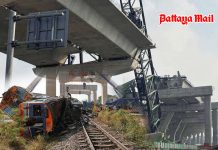BANGKOK, 28 May 2015 – The Cabinet has approved the 1.1 billion baht budget for the construction of a border transport project in Nakhon Phanom that will help facilitate the logistics in the ASEAN region, according to a spokesman.
According to the Prime Minister’s Office Deputy Spokesman Maj Gen Sansern Kaewkamnerd, the Cabinet has accepted the principle budget for the construction and operation of the border transport center in Nakhon Phanom province. The construction will be carried out by the Department of Land Transport under a 1.1 billion baht budget during a 4-year period (2016-2019).
The project was first proposed as a scheme which the initial construction will be carried out by the government, while the management, and maintenance will be carried out by private companies. The Prime Minister suggested that mutual investment between the government and the private sector right from the beginning could also save the project’s costs.
The project will have to be submitted for Cabinet approval again, along with the investment ratio and the expected investment returns, in keep with the Private Investment in State Undertakings Act.
The border transport center in Nakhon Phanom province will be the logistics center between Thailand, Laos, Vietnam, and Western China, along the R12 Road. It will also operate as a One Stop Service Center for import and export procedures. The center will be facilitating connectivity between road and rail, and will support the establishment of the Special Economic Zones.
The center will be built next to the existing Thailand-Laos border post at the Third Mekong Bridge in Nakhon Phanom. It will feature the goods transport facilities, passenger transport facilities, border trade promotion office, road to rail transfer facilities, and trading facilities.
This project is expected to boost Nakhon Phanom’s and nearby provinces’ economies with goods ranging from fashion, consumable, wood, industrial, energy, and agricultural goods. Industrial goods are expected to be the main imports, while agricultural industrial goods will be the main exports passing through the transport center.




